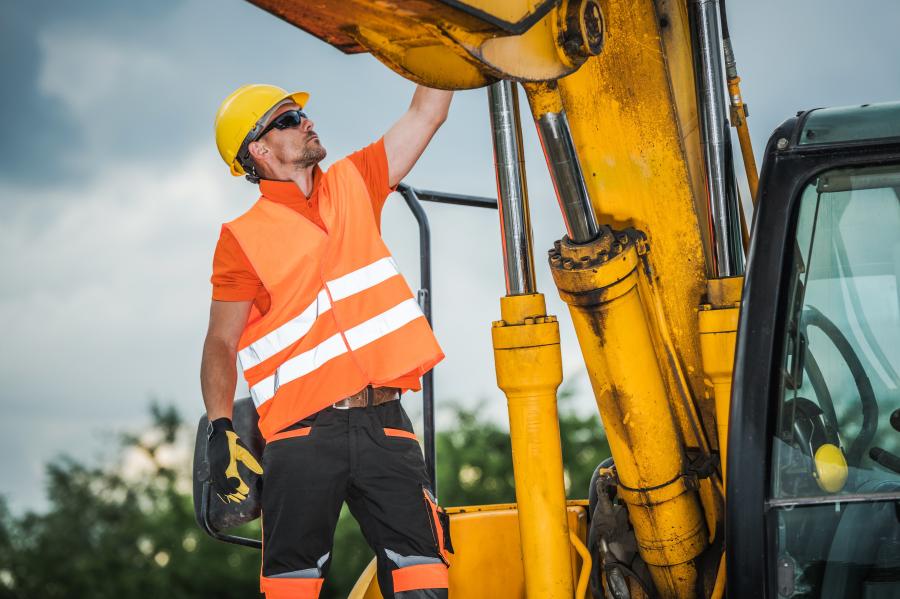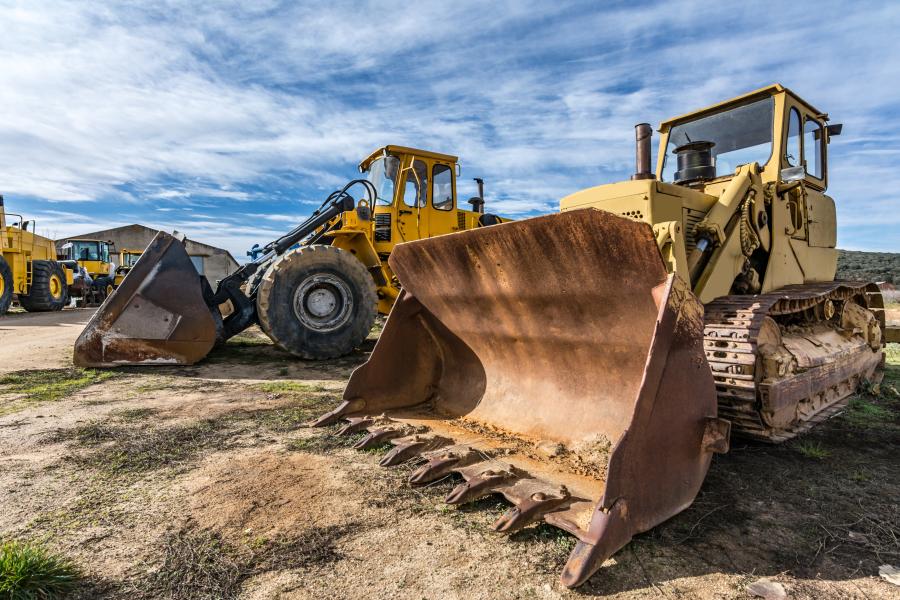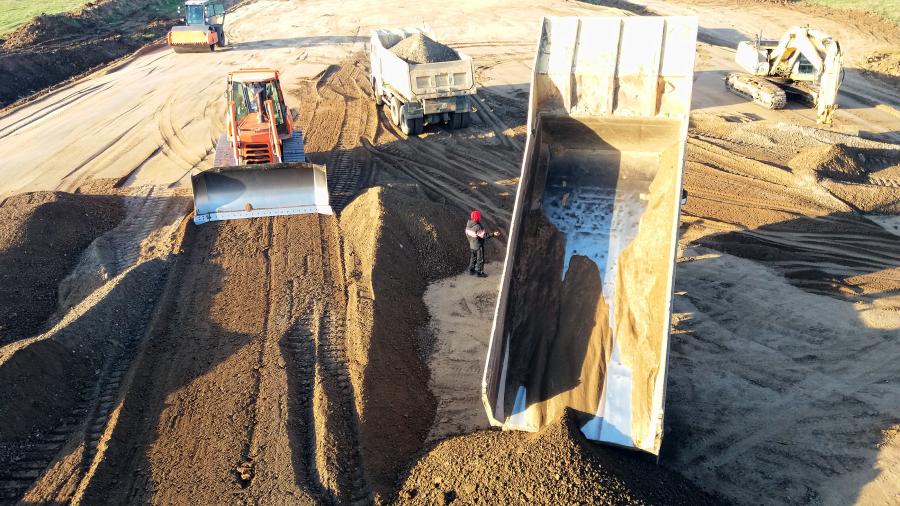An injury, illness or fatality on a job site can often be attributed to an unsafe condition or act. These situations almost always result from failure of some component of an organization’s management system.
With a primary goal of "correcting workplace safety and health hazards and ensuring compliance," OSHA has raised its civil penalties by about 1.8 percent for workplace safety and health violations. The new penalty amounts take effect immediately, applying to any penalties assessed after Jan. 15, 2020. If an OSHA Compliance Safety and Health Officer (CSHO) finds a hazard or standard violation during an onsite inspection, the inspector may issue citations and penalties.

If the agency issues any citations or penalties, an employer may request an informal conference with the OSHA area director to discuss citations, penalties, abatement dates or any other information pertinent to the inspection. The agency and the employer may work out a settlement agreement to address hazards found during an inspection. Like OSHA, construction contractors want a safe job site. But for workers to perform their jobs safely, they need the right tools and equipment for the task at hand; training and education to make good decisions; and jobsite leadership that motivates and encourages safe behavior, believes Paul Satti of the Chicagoland Construction Safety Council. A work-related event during which an injury, illness or fatality has occurred can often be attributed to an unsafe condition or act on a construction site, he said.
These situations almost always result from failure of some component of an organization's management system, continued Satti, the Council's technical director. Flawed safety and health programs often share these characteristics:
1) a lack of management support, commitment, and resources;
2) insufficient training; and
3) a failure in supervisor accountability.
"In the construction industry, short-sighted pressures abound, from ‘working fast' to ‘getting the job done' to ‘accommodating the lowest bidder.' In the long run, these strategies prove costly," he said.
An effective safety and health management system rewards successful businesses with fewer losses in manpower, equipment and productivity.
"The core elements of an effective safety and health management system include management leadership, worker participation, risk identification and assessment, hazard prevention and control, education and training," said Satti.
To help employers and employees remain safe and sound, OSHA has established a national network of more than two-dozen training organizations located throughout the country. Each OSHA Training Institute (OTI) Education Center offers affordable and accessible programming for the construction, maritime, and general industries, according to Satti.
His three best practices for incident prevention on construction job sites are a commitment to a comprehensive safety and health management system that includes established goals and engaged employees; training at all levels, from experienced supervisors to front-line workers, about how to recognize and avoid workplace hazards; and accountability for individual actions. He said this includes "persistence in determining the root causes of unsafe conditions and behaviors."
It behooves all construction contractors to make sure the equipment operators in their employ are qualified to run the machinery assigned to them. But construction data management solutions provider Nektar said because of the prevalence of incident reports involving heavy equipment and earthmoving machines, operators must have identifiable and verifiable training on the equipment they are operating that day.
According to the Edmonton, Alberta-based company, accidents can happen to both novice operators and seasoned veterans.
"Accidents can happen, but most are preventable incidents," according to Nektar. "Having regular safety meetings and up-to-date procedures and training will keep incidents down and work days more efficient."
Here are the company's tips for avoiding equipment accidents beginning with situational awareness:
- Blind spot: Heavy equipment operators have to be 100 percent sure that no one is behind them or in their blind spots when moving, even if this involves getting out of the machine and checking. If vision is limited, have a spotter stand in a safe, visible position to guide and direct you. Inform those working around you of your blind spots and require them to make eye contact with you before coming in the equipment's vicinity. High-visibility vests are a must on all sites.
- Communication: Always be in constant communication with the people working around you. A two-way radio is the best form of communication, according to the company. If that option is not available, then use hand signals from a spotter who has been properly trained. Communication with operators should be touched upon at every safety meeting and reinforced by the foreman on site.
- Seatbelts: Wearing a seatbelt in heavy equipment is just as important as in a moving motor vehicle. There is no excuse for not wearing one at all times. Not only will it save the operator's life in the case of a rollover, it keeps him or her firmly in the seat when operating on rough terrain, saving energy and reducing close calls by the end of a long day.
- Mounting and dismounting: Falls and stepping on and off are some of the biggest causes of injury recorded by OSHA and other safety departments. This includes entering and exiting the cab of a machine. A good rule of thumb is to always maintain a three-point contact when getting on or off of your equipment, and never jump. The Three-Point Rule requires three of four points of contact to be maintained with the vehicle at all times: two hands and one foot, or both feet and one hand. If handholds or steps are damaged, replace them. It could prevent major injury over time.
- Loading/unloading equipment: Always be sure to be on level ground when loading or unloading your equipment. It greatly reduces the risk of rollovers or sliding off the low-bed ramps. If you are unloading on a busy jobsite or high traffic area, make sure people are clear of the unloading area and use a spotter to guide you.
- Overhead and underground hazards: Before work starts on any job site, all over-head obstructions such as power lines and low clearance should be identified and flagged. Underground utilities such as water, sewer, gas and electrical need to be located by the appropriate department and marked with color-coded paint. Play it safe when getting close to the underground utility and hand dig to uncover, said Nektar. When leaving dugout holes that workers or the public can fall in to, be sure to set up barriers and snow fencing.
- Lock-out/tag-out: In accordance with OSHA, employers must train and have procedures in place to ensure that before any employee performs service or maintenance on a machine where unexpected start-up or release of stored energy could occur and cause injury, the machine or energy source must be rendered inoperative. This includes hazards such as pinch points, attachments, and raised loads. Picture warnings, locks and tags are to be used to prevent any incidents.
- Load limits: Be aware of the load limits of varying equipment when operating different machines throughout the day. Depending on the equipment set-up and size, the load limits can change drastically. When lifting objects with a machine make sure loads are secure with the proper rigging attachments, and always inspect to ensure they are in good working condition. As with most equipment operations, confirm all workers are at a safe distance when lifting and moving loads.
- Walk-around inspection: Equipment should be inspected at least once daily before operating. This involves walking around with a pre-developed checklist of components to check for good working order. Hydraulic hoses, undercarriage, oil levels, stress points, etc. are all areas that need to be inspected and reported to the maintenance/safety department before machine start-up. Using a cloud-based mobile device to complete a task such as this can greatly improve communication and response time between operator and mechanic.
- Knowing your limits: Operating heavy equipment can be a stressful job at times even for a seasoned veteran. Never put yourself in a situation you don't feel comfortable in regardless of your instructions. Get out and look if unsure about working on a slope or around hazards. Staying calm and alert throughout the day will allow you to be more productive, and will translate to a positive working environment for those around you.
Working with or around heavy equipment should be part of your overall safety program. All workers should be trained on the dangers and hazards of working with heavy equipment. Additional tips from construction pipeline management solution developer Construct Connect include:
- Lights, camera, action: When you fire up the equipment, make sure the lights, gauges, horn, and backup alarms are all working properly. Make sure all arms, shovels, buckets, etc. fully extend in all directions. If the cab rotates, check to make sure it can do so in all directions. Never use equipment that isn't working properly or appears damaged. Not only could you damage the machine further, but it could be a major safety issue if not fixed before use.
- Dress for success: Always wear proper personal protective equipment (PPE) such as gloves, safety glasses, sturdy boots and hard hats. Make sure the equipment fits you properly and is designed for the task to be performed.
If you work with or around heavy construction equipment, you'll have a healthy respect for what these powerful machines can do, believes heavy equipment provider Holt of California. Most workers perform daily duties uninjured because they're aware of dangers associated with equipment operation, and they take steps to mitigate potential accidents. These astute operators and helpers truly appreciate the importance of heavy equipment safety. Here are jobsite safety tips from Holt:
- Ejection injuries: Machinery and equipment can eject objects and strike someone. Common mechanical hazards include rotating shafts, colliding surfaces, scissor or shear action, sharp edges and detachable connections. Risks associated with mechanical hazards are entanglement, crushing, severing, cutting, and puncturing as well as slips and falls when dodging moving components.
- Non-mechanical hazards: Not all heavy equipment hazards come from components in motion. Almost all machines have stored energy waiting for release. That can be gasses or fluids under pressure, electrical charges and hot surfaces. Worker hazards from non-mechanical means also include noxious substances like exhaust emissions and chemical by-products. As well, consider the noise hazard that heavy equipment operation generates. Holt noted that situationally aware workers always assess their machinery for non-mechanical hazard potential. They realize how heavy equipment affects the area or environment around them, and know that common non-mechanical hazards include dust; explosive or flammable atmospheres; radiated and conducted heat; high-intensity light like lasers or welding arc flashes; heavy metals including lead, mercury and cadmium; steam releases; and ionizing radiation such as microwaves and X-rays.
Whether you're around a large excavator on a commercial construction site, working with a grader in the roadbuilding industry or operating a skid steer on a residential renovation project, you need to be aware of what your equipment is capable of, stressed Holt. That includes what it's capable of doing to you. CEG
Lucy Perry
Lucy Perry has 30 years of experience covering the U.S. construction industry. She has served as Editor of paving and lifting magazines, and has created content for many national and international construction trade publications. A native of Baton Rouge, Louisiana, she has a Journalism degree from Louisiana State University, and is an avid fan of all LSU sports. She resides in Kansas City, Missouri, with her husband, who has turned her into a major fan of the NFL Kansas City Chiefs. When she's not chasing after Lucy, their dachshund, Lucy likes to create mixed-media art.
Read more from Lucy Perry here.
Today's top stories
















